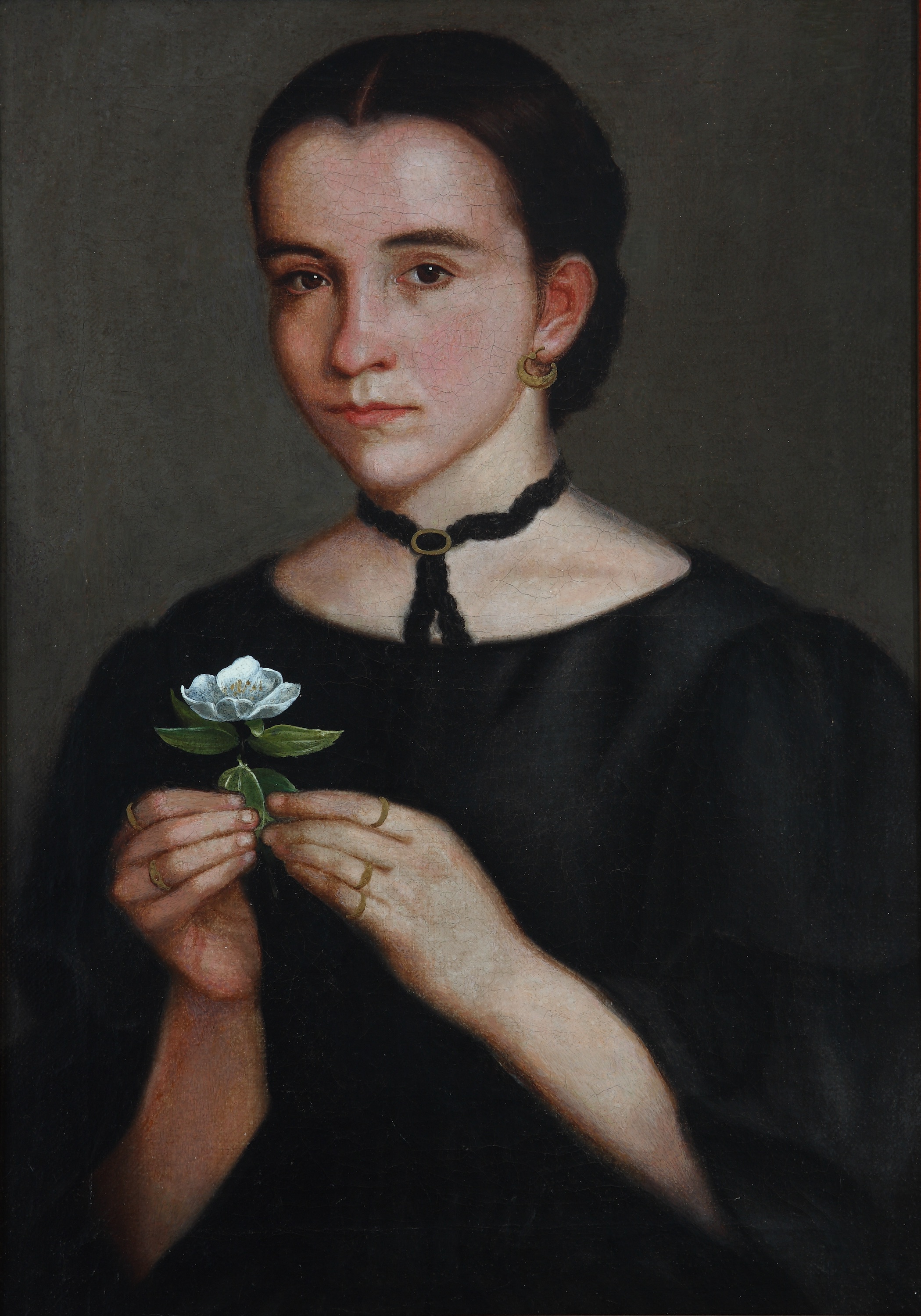This portrait of Dolores Hoyos, in addition to perpetuating the memory of the person in the mind of her family and friends, shows the realism that characterized the pictorial language of Hermenegildo Bustos. The artist was interested in reflecting on the features of each face, the emotional and psychological burden of the portrayed, unlike the idealization that surrounded paintings made in the second half of the 19th century.
Dolores Hoyos is presented as a young woman who delicately holds in her hands a white flower, a magnolia. This flower represents nobility of spirit and purity, among other symbolisms. These attributes could be typical of youth or, symbolize a loss; the young woman is dressed completely in black, as if she were mourning and although it is a mere interpretation, it is also a possibility.
The accessories worn by the young woman are simple: a pair of earrings, a necklace tied around the neck by an oval clasp, and a few rings that don’t have many details. When compared to the inventory of jewelry and accessories worn by the other subjects throughout the artist's career, this suggests that he could have been raised in the middle class. In the black dress the painter manages to note some folds with a few slightly lighter brushstrokes; the clothes and the background contrast with the girl's white skin and the snowy flower.
Dolores Hoyos appears undaunted and although she directs her gaze straight ahead, it seems lost. She has a solemn expression, like all the people portrayed by Bustos. It is rare or nearly impossible to find the outline of a smile in any of the portraits, including children. Despite this seriousness, the painter manages to capture in his works a trait that reveals the character he has portrayed.
One of Hermenegildo Bustos's concerns was to accurately capture the physiognomy of his models, which is the reason strong and hard, but also subtle and gentle expressions can be found in his work. In his paintings, iconographic elements such as the magnolia flower represented in this painting also appear regularly. From 1850 on, a series of constant elements appear in his work, both technical and formal. For 22 years he used either a steel sheet or fabric as a support, and almost every time he presented the figures in three-quarter profile on a rectangular format. Such is the case of this work done by the artist in 1864.
- Maestro Carlos Uzcanga Gaona.
We present today's painting thanks to the Museo Blaisten. : )
P.S. Here are 10 of the most famous female artist self-portraits. <3


_-_Google_Art_Project.jpg) Hermenegildo Bustos
Hermenegildo Bustos